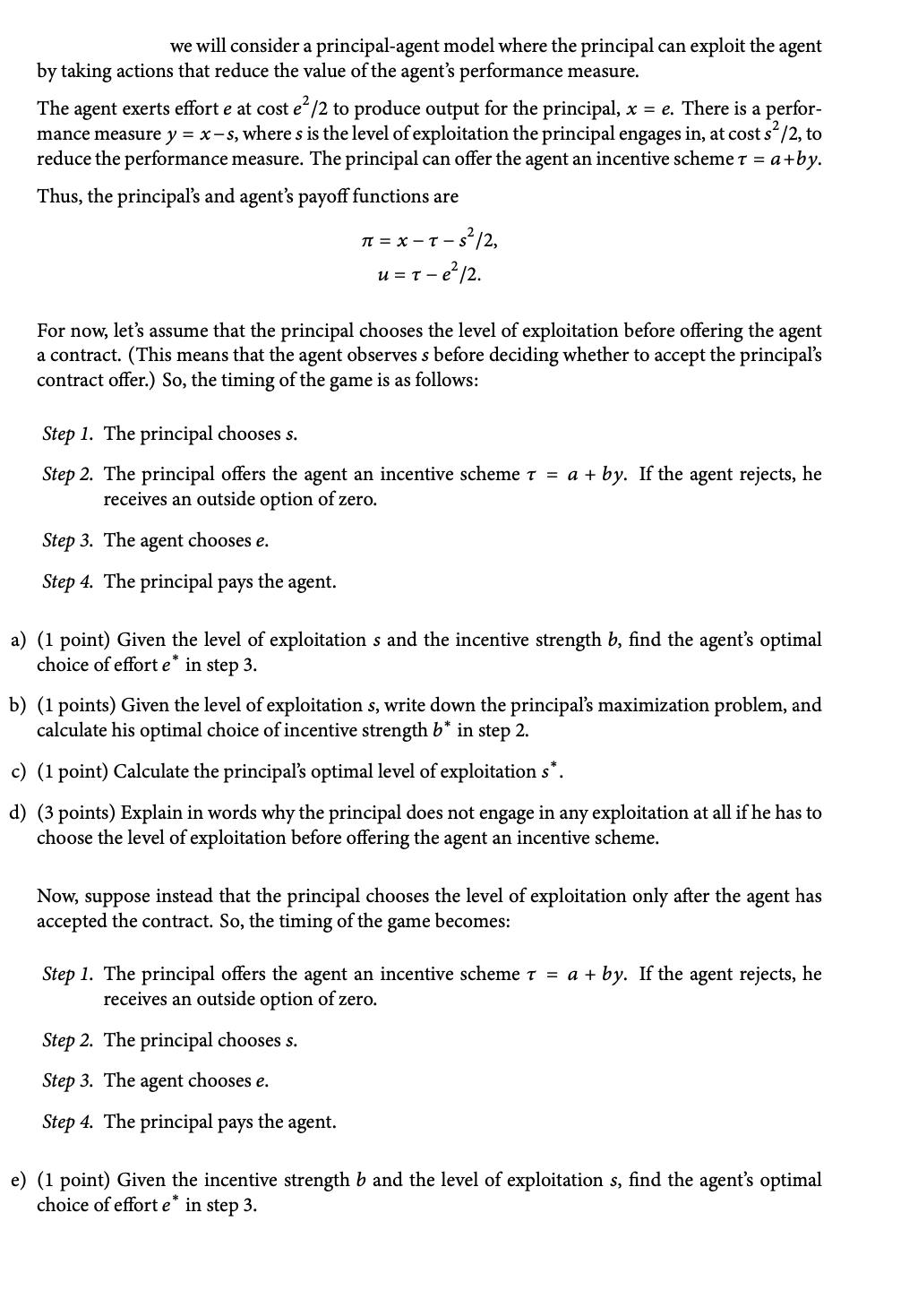Answered step by step
Verified Expert Solution
Question
1 Approved Answer
we will consider a principal-agent model where the principal can exploit the agent by taking actions that reduce the value of the agent's performance


we will consider a principal-agent model where the principal can exploit the agent by taking actions that reduce the value of the agent's performance measure. The agent exerts effort e at cost e/2 to produce output for the principal, x = e. There is a perfor- mance measure y = x-s, where s is the level of exploitation the principal engages in, at cost s/2, to reduce the performance measure. The principal can offer the agent an incentive scheme T = a+by. Thus, the principal's and agent's payoff functions are =x-T-s/2, u = T-e/2. For now, let's assume that the principal chooses the level of exploitation before offering the agent a contract. (This means that the agent observes s before deciding whether to accept the principal's contract offer.) So, the timing of the game is as follows: Step 1. The principal chooses s. Step 2. The principal offers the agent an incentive scheme T = a + by. If the agent rejects, he receives an outside option of zero. Step 3. The agent chooses e. Step 4. The principal pays t the agent. a) (1 point) Given the level of exploitations and the incentive strength b, find the agent's optimal choice of effort e* in step 3. b) (1 points) Given the level of exploitation s, write down the principal's maximization problem, and calculate his optimal choice of incentive strength b* in step 2. c) (1 point) Calculate the principal's optimal level of exploitation s*. d) (3 points) Explain in words why the principal does not engage in any exploitation at all if he has to choose the level of exploitation before offering the agent an incentive scheme. Now, suppose instead that the principal chooses the level of exploitation only after the agent has accepted the contract. So, the timing of the game becomes: Step 1. The principal offers the agent an incentive scheme T = a + by. If the agent rejects, he receives an outside option of zero. Step 2. The principal chooses s. Step 3. The agent chooses e. Step 4. The principal pays the agent. e) (1 point) Given the incentive strength b and the level of exploitation s, find the agent's optimal choice of effort e* in step 3. f) (1 point) Given the incentive strength b, calculate the principal's optimal level of exploitation s* in step 2. g) (1 point) Calculate the principal's optimal choice of incentive strength b*. h) (3 points) You should find that your answer for b* is smaller in part (g) than in part (b). Explain in words why the principal offers weaker incentives (resulting in inefficiently low effort) when he chooses how much to exploit the agent only after the agent has accepted the incentive scheme.
Step by Step Solution
There are 3 Steps involved in it
Step: 1

Get Instant Access to Expert-Tailored Solutions
See step-by-step solutions with expert insights and AI powered tools for academic success
Step: 2

Step: 3

Ace Your Homework with AI
Get the answers you need in no time with our AI-driven, step-by-step assistance
Get Started


